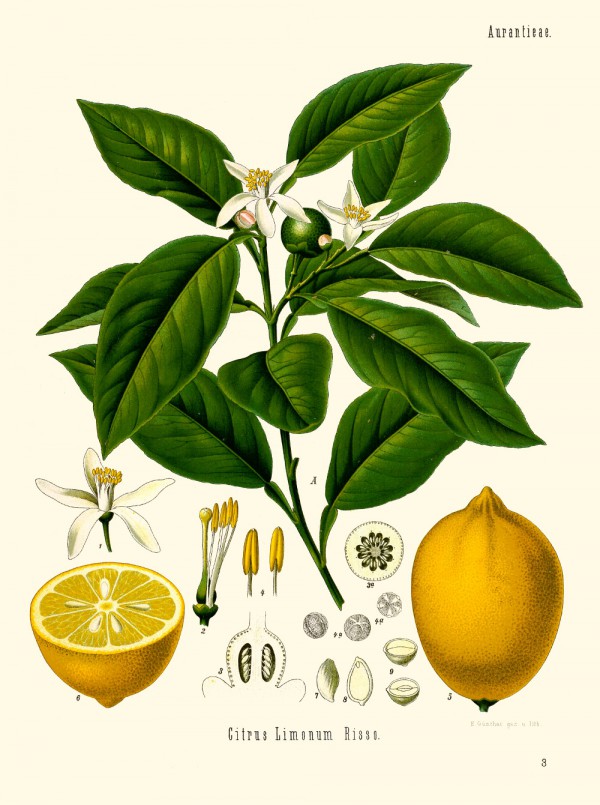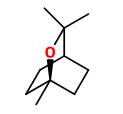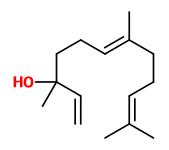Dies ist eine alte Version des Dokuments!
Citrus x limon - syn. Citrus limon (L.) Burm. f.; Citrus limonum Risso; Citrus medica var. limon L. - Rutaceae - lemon, Zitrone
Small evergreen tree, native to Asia, cultivated worldwide.
„The parents of the lemon are Citrus ×aurantium and C. medica. Backcrosses with either parent give a range of sour to sweet lemons which go under various names and perhaps would best be considered as forming cultivar groups, e.g., Bergamot Group. The rough lemon, C. ×taitensis Risso (C. ×aurantium subsp. jambhiri Engler; C. ×jambhiri Lushington; C. ×sinensis subsp. jambhiri (Lushington) Engler), sometimes included here, is perhaps C. medica × C. reticulata.“ http://www.efloras.org/florataxon.aspx?flora_id=2&taxon_id=250084128
Lemon flower scent: Major components of the headspace of Citrus limon flowers were limonene (5.6-23.9%), 1,8-cineole (9.8-20.4%), nerolidol (1.2-14.9%), phenylacetonitril (0-17.6%), phenylacetaldoxime (0-8.4%), (E)-2,3-dihydrofarnesal (4.1-8.2%), myrcene (0.5-7.4%), and indole (2.6-5.0%).
[Kaiser, Roman. „Environmental scents at the Ligurian coast.“ Perfum. Flavor 22 (1997): 7-18.]
Genuine (E)-2,3-dihydrofarnesal found in the scent of orchids (Aerides jarckianum) and in the blossom fragrance of Citrus limon has an enantiomeric distribution in the range of 85:15 in favour of the (3S)-enantiomer.
[Bartschat, Dietmar, et al. „Chiral compounds of essential oils XXI: (E,Z)‐2,3‐dihydrofarnesals - chirospecific analysis and structure elucidation of the stereoisomers.“ Phytochemical Analysis 8.4 (1997): 159-166]
Major volatiles of intact grapefruit, sweet orange, sour orange, mandarin, lemon, lime and pummelo blossoms were linalool, β-myrcene, α-myrcene, limonene, (E)-ocimene, methyl anthranilate and indole. „In terms of total volatiles: pummelo ≫ grapefruit ≈ sweet orange > sour orange ≈ mandarin ≈ lemon-lime > Volkamer lemon > Kaffir lime. Principal component analysis of blossom volatiles demonstrated that there were three widely separated, tightly clustered groups which consisted of mandarin, lemon-lime and pummelo.“
[A comparison of citrus blossom volatiles., Jabalpurwala, F.A., Smoot, J.M., Rouseff, R.L., Phytochemistry, 70(11), 2009, 1428-1434]
Main flower volatiles detected by headspace solid phase microextraction and gas chromatography spectrometry (HS-SPME-GC-MS) from fully opened flowers of Citrus limon cultivar Eureka were limonene (52.5%), (E)-ocimene (6.3%), β-elemene (6.0%), linalool (3.9%), γ-terpinene (3.1%), trans-limonene oxide (3.0%), caryophyllene (3.1%), β-myrcene (2.4%), and β-bisabolene (2.3%). Minor components were indole (0.7%), methyl anthranilate (0.04%), β-farnesene (1.6%), nerolidol (0.06%) e.g.
[Azam, M., Song, M., Fan, F., Zhang, B., Xu, Y., Xu, C., & Chen, K. (2013). Comparative analysis of flower volatiles from nine Citrus at three blooming stages. International journal of molecular sciences, 14(11), 22346-22367] http://www.mdpi.com/1422-0067/14/11/22346/htm
Lemon peel oil: Major components are products of isoprenoid biosynthesis: Limonene, citral (geranial and neral), γ-terpinene, β-pinene, and β-bisabolene. But small amounts of methyl epijasmonate are also present and contribute much to the strong scent of very ripe lemons.
[Isolation and characterization of methyl epijasmonate from lemon (Citrus limon Burm.)., Nishida, R., Acree, T.E., Journal of Agricultural and Food Chemistry, 32(5), 1984, 1001-1003]
„Inter-simple sequence repeats (ISSR), simple sequence repeats (SSR) and isozymes were used to measure genetic diversity and phylogenetic relationships among 95 Citrus L. accessions including 57 lemons [C. limon (L.) Burm. f.], related taxa, and three proposed ancestral species, C. maxima (Burm.) Merrill (pummelo), C. medica L. (citron), and C. reticulata Blanco (mandarin). The ancestry of lemons and several other suspected hybrids was also studied. Five isozyme and five SSR loci revealed relatively little variation among most lemons, but a high level of variation among the relatively distant Citrus taxa. Eight ISSR primers amplified a total of 103 polymorphic fragments among the 83 accessions. Similarity matrices were calculated and phylogenetic trees derived using unweighted pair-group method, arithmetic average cluster analysis. All lemons, rough lemons, and sweet lemons, as well as some other suspected hybrids, clustered with citrons. Most lemons (68%) had nearly identical marker phenotypes, suggesting they originated from a single clonal parent via a series of mutations. Citrons contributed the largest part of the lemon genome and a major part of the genomes of rough lemons, sweet lemons, and sweet limes. Bands that characterize C. reticulata and C. maxima were detected in lemons, suggesting that these taxa also contributed to the pedigree of lemon.“
[Lemons: diversity and relationships with selected Citrus genotypes as measured with nuclear genome markers. Gulsen, O., Roose, M. L., Journal of the American Society for Horticultural Science, Vol.126(3), 2001, 309-317]
Lemon peel oils consist almost exclusively of hydrocarbons, the olefin fraction is much higher than the oxygenated one. Limonene is the main constituent (48-70%), also present are β-pinene (up to 15%), γ-terpinene (1-8%), α-pinene (0.2-2%), sabinene (0.1-2%), myrcene (1%), p-cymene (0.1-7%), neral (0.1-1%), geranial (0.2-2%), neryl acetate (0.1-3%) and geranyl acetate (0.1-3%). Olefinic sesquiterpenes are also present in low amounts, namely, β-bisabolene (0.5-2%) and trans-bergamotene (0.1-1%). The Barum cultivar has limonene (52%) with linalyl acetate (23%) and linalool (16%).
The major components of lemon leaf oils are limonene (17-23%), β-pinene (10-25%), geranial (14-22%), neral (10-16%). Also present are neryl acetate (1-5%), geranyl acetate (1-3%), linalool (1-8%), 1,8-cineole (1-5%), sabinene (1-4%), (E)-β-ocimene (1-2%), myrcene (1%), α-pinene (1%), 6-methylhept-5-en-2-one (1-3%), terpinen-4-ol (0.2-1%), α-terpineol (0.5-1.5%) and citronellal (around 1%).
[Volatile components of peel and leaf oils of lemon and lime species. Lota, M. L., de Rocca Serra, D., Tomi, F., Jacquemond, C., Casanova, J., Journal of Agricultural and Food Chemistry, Vol.50(4), 2002, 796-805]
http://193.48.30.205/IMG/pdf/2002_JAFC_CitronsLimes.pdf
The main constituents of the fresh peel oil are (+)-R-limonene (60-80%), and β-pinene. Together with terpinen-4-ol these compounds are responsible for a green peel odor association. Citral and the C8-C12 alkanals (0.5-0.8%) are regarded as the character-determining components of lemon oil. (E)-α-bergamotene (0.4%) adds a distinct pepper note, and some esters, especially geranyl acetate (0.1-1%) and neryl acetate (0.7%), contribute with fruity notes.
[Scent and Chemistry, Günther Ohloff, Wilhelm Pickenhagen, Philip Kraft, Wiley-VCH, 2012, 227-229]

Lemon, as Citrus limonum Risso, Köhler,F.E., Medizinal Pflanzen, vol.1, t.3 (1887)
http://plantgenera.org/species.php?id_species=249920
Citrus × limon, Wien, Palmenhaus Schönbrunn
© Rolf Marschner (2015),
www.botanische-spaziergaenge.at





